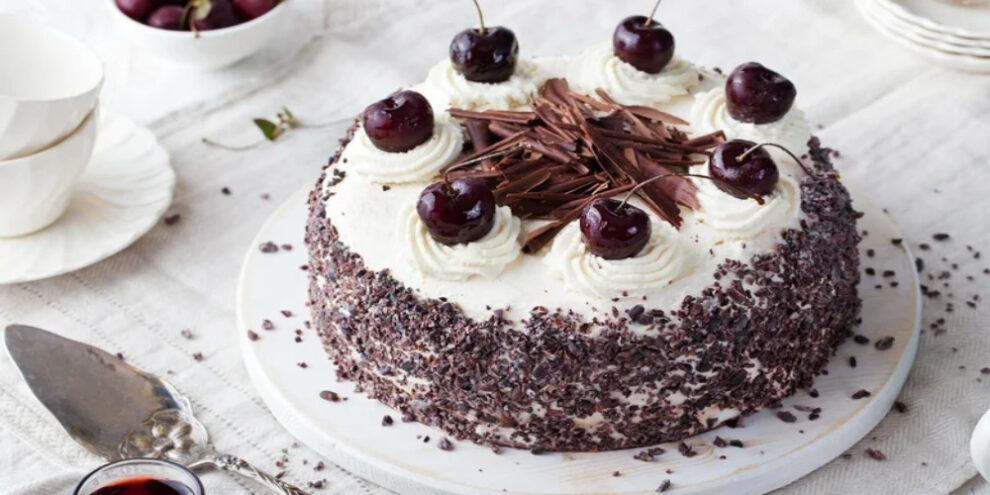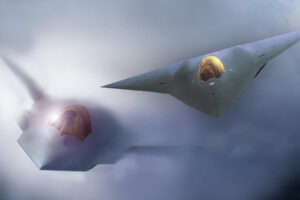German cuisine is typically associated with beer, pretzels, and sausages. These three hearty foods encompass a lot of what you’ll find at Oktoberfest-inspired events seeking to replicate the European country’s style. Other iconic German foods, like schnitzel, spaetzle (or spätzle), and döner kebab, have become more widely-known internationally while not straying far from the German language. But there is more to this culinary tradition than savory dishes. The country has tons of unique desserts under its belt, as well.
Traditional German desserts have less in common with one another than you might think. The country’s sweet tradition is diverse, not unlike its varied savory recipes. There are pastries, cakes, cookies, and candy; treats are made from fruit, chocolate, cream, powdered sugar, coconut, and nuts. Whether you are looking to get more in touch with the desserts of your ancestry, attempt to make something delicious you had during a European vacation, or simply sample the sweets of another culture, read on. Here are 10 little-known German desserts you need to start making.
- Bee Sting cake
Bee Sting Cake, a.k.a. Bienenstich, is a German dessert made of layers. According to the blog I Like Germany, the name of this cake has been connected with two popular origin stories. In one version, the Bee Sting Cake got its name when bakers were attacked by bees while making the treat. In another tale, Bienenstich was named after bakers who threw beehives at their enemies to protect themselves. This unique pastry is made with honey, making the name fit no matter where exactly it came from.
This treat has gained popularity among Aldi shoppers. A pre-made version of this cake is sold at the international supermarket chain during German Week, a biannual event during which more traditional German foods are sold in stores. “When I see it I usually grab two to put in the freezer. That creme filling and the almonds…one of my Aldi faves,” said one person on Reddit. “I wish my wife would get home with the Bee Sting cake already,” wrote another fan of this dessert.
If you can’t find this iconic cake at Aldi you can try making it yourself. It consists of only three components: cake, filling, and a topping. The base comes from a soft, yeast-leavened dough with a texture somewhere between brioche bread and birthday cake. The custard filling is primarily vanilla but sometimes infused with almond flavor. This goes between two layers of cake. The topping is composed of a crunchy layer of almond slivers and honey.
- Pfeffernüsse
Pfeffernüsse is the name of a delicious cookie that is eaten during the holidays. Its origins are unclear, but it’s connected to the feast of Sinterklaas, a celebration observed at the beginning of December in Germany and other countries. During this holiday, children receive presents from St. Nicholas — sometimes by leaving their shoes out to be filled with gifts. The feast of Sinterklaas is said to have inspired today’s Christmas celebrations. These treats are also recognized on Pfeffernüsse Day, which is December 23.
These cookies are eaten in multiple European countries during Christmastime, not just in Germany. The Netherlands and Scandinavian countries also make similar treats, which is partly why you’ll see so many names for them. According to Ten Random Facts, “peppernødders,” “Pfeffernüsse,” “peppernuts,” and “pebernødder” could all be used to refer to the same recipe.
At first glance, these Christmas desserts look a little like donut holes. They have a mostly round shape with one flat side. The Christmas dessert is made from a dough that’s mixed with cocoa and a spice blend made of cloves, cinnamon, ginger, cardamom, star anise, and more. After baking, the cookies are either rolled in a lemon glaze or sprinkled with confectioner’s sugar. If this sounds good to you, don’t wait until December to enjoy Pfeffernüsse.
- Stollen Bread
Another German dessert you need to make is stollen bread. This dessert is sometimes also referred to as a “stollen.” If you’re going to try your hand at this, the most appropriate time to do so is Christmastime. It has been eaten during the holidays in Germany for hundreds of years. As far back as the 1400s, people enjoyed eating Christmas stollen. In the beginning, it was eaten without butter per Catholic fasting rules during the holidays. By the 1600s, this restriction was lifted, allowing the cake to become even more flavorful.
The treat consists of one long, rounded pastry. This shape is meant to mimic the form of Jesus Christ wrapped in swaddling clothes (one iconic Christmas image). The imagery is emphasized even more so when the entire pastry is dusted with a white layer of sugar, making it look even more like it’s wrapped in cloth.
This German treat may also remind you of a fruitcake, another popular Christmas dessert. It consists of dough filled with dried fruits and nuts such as raisins, cherries, lemon, and almonds. Spices like cloves, mace, cinnamon, and nutmeg are also mixed in. Before baking, it is soaked in apple cider vinegar and wrapped around a log of marzipan, almost like an almond croissant. After baking, the stollen bread is brushed with melted butter and dusted with confectioner’s sugar.
- Black Forest cake
Black Forest Cake is usually associated with the German region of the same name, which is located in Southwestern Germany. The name “Black Forest” (or “Schwarzwald” in German) comes from the darkness created by its densely-packed greenery, so crammed with trees that light is prevented from coming through. While the Black Forest itself appears green, the cake named after it is black.
According to What’s Cooking America, the cake may have gotten its name from the outfits worn by women living in the Black Forest. These costumes were black, white, and red. There is a component for each of these colors in the cake. Black is represented by dark-colored chocolate sprinkles and the inner cake, white is shown through the cake’s layer of frosting, and red is shown through its cherry topping. The cake’s official German name is “Schwarzwälder Kirschtorte,” which translates to “Black Forest Gateau” or “Black Forest Cherry Torte.”
Other stories say that this national dessert of Germany gets its name from Schwarzwalder Kirschwasser, a cherry brandy that the cake is soaked in to give it its somewhat fruity flavor. Fans of chocolate and cherry are sure to love this cake, which combines some of the most delicious dessert elements into one, all while creating a dynamic feast for the eyes.
- Strudel
Strudel is a dessert that’s popular in several Western and Central European countries. The version that’s popular in Germany is called Apfelstrudel, also known as apple strudel. The term for this dish comes from the German word for “whirlpool,” because of the rolling appearance of its pastry layers.
Apple strudel is popular in Austria, where it is sometimes referred to as the country’s national dish. This popularity across borders is also relevant to the origins of the dish. According to The Culture Trip, it has thin layers of pastry that are indicative of Turkish techniques, leading historians to believe that Apfelstrudel emerged as a collaboration between different cuisines. It’s all the more difficult for one country to lay claim to it due to apple strudel’s age. The desert has been around since approximately the 1600s.
Apple is not the only ingredient you’ll find inside strudel; berry, spinach, potato, or cream cheese are other common fillings. It is traditionally served with a scoop of whipped cream on top. In some settings, people also like to consume a shot of espresso with their strudel. This treat is so warm and comforting, it’s not hard to see why Julie Andrews expressed her love for it in “The Sound of Music.”
- Kaiserschmarrn
The iconic German food “Kaiserschmarrn” translates to “emperor’s mess.” Although this name doesn’t sound appetizing, we assure you that it is. This treat consists of a mixture of eggs, milk, flour, salt, and raisins. The batter is baked or fried in butter, cut into little pieces, and then dusted with powdered sugar. Kaiserschmarrn is served with sides of plum sauce or applesauce; sometimes, additional raisins are sprinkled on top of the dish. It has a final form that looks like a funnel cake but tastes like a deconstructed pancake.
Like other European treats, Kaiserschmarrn is a shared passion between the countries of Austria and Germany. Today, it is perhaps most popular in Southern Germany — the region closest to Austria — where historians believe that Kaiserschmarrn was invented. The first iteration of the dish may have been prepared for Austrian Emperor Franz Joseph I, who lived from the 1800s to the early 1900s. The story says that the Emperor ate his wife’s leftover dessert, giving the dish the name “emperor’s mess.”
- Franzbrotchen
Franzbrötchen is a German dessert that looks like both a croissant and a cinnamon roll. The dessert is made from two delicious components. There’s the dough — a combination of yeast, milk, flour, salt, butter, sugar, and cinnamon — and then there is the filling — made from butter, sugar, and cinnamon. This iconic German food has a name that references France (where croissants come from, of course) — the term Franzbrötchen translates to the expression “French roll.”
Per Berlino Schule, this treat may indeed be a product of the mixing of German and French cultures. According to one story, it came about when Napoleon invaded the city of Hamburg during the early 1800s. The French subsequently occupied the city for a short period, during which soldiers asked local bakers to make them their beloved croissants. The German bakers either struggled to replicate the lightness of croissants’ flaky pastry dough, or refused to learn how to make it as a way of rebelling against the French invaders. Their unsuccessful attempts led to the Franzbrötchen.
Another Franzbrötchen origin story connects the dessert to an individual baker. In the story, a man named Franz became intoxicated while on the job. He then accidentally sat on a baking sheet covered with cinnamon croissants, leading the Franzbrötchen to get their iconic squashed-looking shape.
- Coconut macaroons
Coconut macaroons are also popular in Germany. Before you get into understanding the history and cultural significance of this cookie, though, you need to understand which type of treat it is. To do so, pay attention to the difference between macarons and macaroons. Macarons are colorful sandwich cookies with a crispy exterior and soft interior. Macaroons are ball-shaped cookies made primarily of mounds of coconut. The latter type is the genre of cookie most popular in Germany.
There are several types of macaroons made in this European country, and they are usually eaten during Christmastime. One of the most popular versions is the German coconut macaroon (Kokosmakronen), which is made from sugar, coconut, and egg whites; another type is almond macaroon (Mandelmakronen), made using sugar, ground almonds, almond extract, and egg whites. Then, there’s the German hazelnut macaroon (Haselnussmakronen) made from sugar, ground hazelnuts, and egg whites. Finally, there’s the broad-ranging nut macaroon (Nussmakronen) made using ground nuts, sugar, and egg whites.
The popular German version of coconut macaroons is not far from the kind you’ve likely tried in America. These coconut macaroons contain very few additional ingredients than the ones previously mentioned; however, spices like cinnamon may be added. Most importantly, melted chocolate is typically added to each side of the macaroon, then chilled, creating chocolate that crunches when you bite into it. The result is a delicious treat perfect for people who love coconut and chocolate, as well as those who don’t have a nut allergy.
- Rum balls
German rum balls are another Christmastime treat with origins that may go as far back as the time of Emperor Franz Joseph, who ruled from the late 1800s to the early 1900s. You’ll find these treats under the names “Rumkugeln,” German rum truffles, Chocolate-Rum Pralines, or the commercially-available version, Rum-Kokos.
If you guessed that the “Kokos” element of these treats referred to coconut, then you would be correct. The rum balls are usually made from ingredients like rum, butter, chocolate, coconut, and cocoa powder. The ingredients are melted down, formed into the shape of a ball, then rolled in chocolate sprinkles. Be aware that these treats do contain real liquor and are not cooked, meaning they can technically make you intoxicated. However, there is such a small amount of alcohol in them that eating a few typically will not have much of an impact.
- Streuselkuchen
Streuselkuchen is a type of German cake that likely originated in the Prussian province of Silesia, which encompasses both modern-day Poland and modern-day Germany. The dessert is sometimes simply referred to as “streusel.” This term means a mixture of sugar, fat, flour, and occasionally other ingredients such as spices, that are used to make a crumbly cake topping or filling. Since “kuchen” means cake, it’s easy to see how Streuselkuchen is sometimes referred to as “crumb cake” in English.
This crumb cake is an important part of German coffeehouse tradition. Going back hundreds of years, Germans were eating cake with their coffee. Around the middle of the 17th century, you could find businesses — or coffeehouses — dedicated to doing that very thing, and serve Streuselkuchen and Kaffeekuchen (coffee cake). Unlike the name suggests, these recipes do not contain actual coffee. Instead, Streuselkuchen and Kaffeekuchen were simply eaten with the caffeinated beverage.
The recipes of Streuselkuchen and Kaffeekuchen are similar. Both are made of a dough base (using things like milk, yeast, eggs, and flour) as well as a crumble topping (made of butter, sugar, and other ingredients). However, coffee cake usually has less streusel, or crumb topping, than crumb cake. If you love crunchy and sweet bits, you should try making a Streuselkuchen.
Source : The Daily Meal









